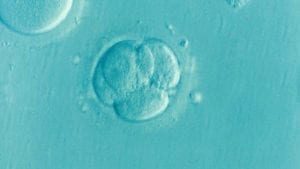FBXL4-related mitochondrial disease urgently requires new therapies. Unfortunately, this condition is often fatal by early ages (early to mid-childhood). Therefore, it is important to spur research into potential interventions or therapeutic options to improve patient outcomes. According to Medical XPress, researchers from the Children’s Hospital of Philadelphia (CHOP) have discovered a molecule that could contribute to this cause.
In their research study, published in JCI Insight, the research team evaluated 12 potential therapeutic candidates. They used human fibroblasts, zebrafish models, and C. elegans models with pathogenic FBXL4 mutations. The study shares that a:
PDHc activator, dichloroacetate (DCA)…demonstrated its beneficial effects on fecundity, neuromotor activity, and mitochondrial function.
After DCA showed promise in C. elegans models, the researchers sought to validate their findings in zebrafish models and human fibroblasts. The research team found that DCA was able to prevent brain death, inhibit neurologic or muscular impairment, and improve mitochondrial function.
While more research is needed on DCA and its potential impact for people with mitochondrial disease, this initial data is promising.
What is a Mitochondrial Disease?
A mitochondrial disease or disorder is an inherited condition affecting the mitochondria, structures in cells that make energy. There are multiple subtypes of mitochondrial disease, such as Barth syndrome, Pearson syndrome, VLCAD, and carnitine deficiency. If you’d like to learn about the different subtypes, take a look at this helpful list from the United Mitochondrial Disease Foundation. These conditions can affect almost any bodily system. Mitochondrial diseases result from mitochondrial DNA or nuclear DNA mutations which cause mitochondrial dysfunction. Symptoms can be present at birth but may occur at any age. Mitochondrial diseases are variable in symptoms, presentation, and severity. Common signs or symptoms can (but do not always) include seizures, muscle weakness and loss of muscle coordination, vision and hearing poblems, developmental delays, diabetes, or heart, liver, or kidney disease.
About FBXL4-related Encephalomyopathic Mitochondrial DNA Depletion Syndrome
According to MedLine Plus, FBXL4 mitochondrial disease – or FBXL4-related encephalomyopathic mitochondrial DNA depletion syndrome – is:
a severe condition that begins in infancy and affects multiple body systems. It is primarily associated with brain dysfunction combined with muscle weakness.
This condition results from FBXL4 gene mutations, which cause a loss in protein function. Ultimately, this causes lactic acid to accumulate in the body to toxic levels. Around 50% of individuals with this condition also have ammonia accumulation in the blood. This can be life-threatening. Unfortunately, the prognosis for this condition is poor; those affected often only live into early childhood. Symptoms and characteristics can include:
- A broad nasal bridge and tip
- Upslanting palpebral fissures (upslanting outside corners of the eyes)
- A long and smooth philtrum
- Thick eyebrows
- Failure to thrive
- Congenital heart defects or heart arrhythmias
- Microcephaly (an abnormally small head size)
- Weak muscle tone (hypotonia)
- Liver abnormalities
- Immune deficiencies
- Developmental delays
- Impaired speech
- Seizures
- Cerebral atrophy








